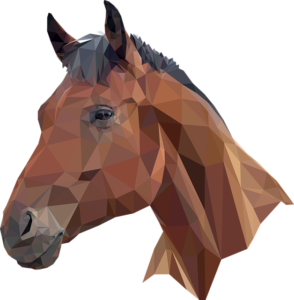Which two Grand National fences are named after horses?
Of course, the five ‘named’ Grand National fences are, in the order in which they are jumped, ‘Becher’s Brook’, ‘Foinavon’, ‘The Canal Turn’, ‘Valentine’s Brook’ and ‘The Chair’. Of that famous quintet, the two that are named after horses are Valentine’s Brook and Foinavon.
Originally known as the Second Brook, Valentine’s Brook is a 5′ high fence, with a 5’6″ wide ditch on the landing side. It is jumped as the ninth and twenty-fifth fence in the Grand National and takes its name from Valentine, a horse who performed an extraordinary feat of aerial acrobatics at the obstacle in 1840. Ridden by Irish amateur Alan Power, Valentine tried to refuse, but somehow managed to clear the fence, reputedly landing hind legs first.
Ironically, Foinavon, which is jumped as the seventh and twenty-third fence during the Grand National, is one of the smallest fences on the National Course, at just 4’6″ high. Nevertheless, the fence was the scene of a famous pile-up in 1967, when the riderless Popham Down ran along the take-off side, bringing most of the field to a standstill. Foinavon, ridden by John Buckingham, emerged from the melee with a clear lead, which he maintained to the line for famous victory at 100/1. In 1984, the fence was officially renamed in his honour.
 Irish billionaire John Patrick ‘J.P.’ McManus is, far and away, foremost owner in National Hunt racing, with hundreds of horses in training on both sides of the Irish Sea. However, for all his pre-eminence, McManus has won the Grand National just twice, his two winners coming over a decade apart. Those winners were, of course, Don’t Push It in 2010 and Minella Times in 2021.
Irish billionaire John Patrick ‘J.P.’ McManus is, far and away, foremost owner in National Hunt racing, with hundreds of horses in training on both sides of the Irish Sea. However, for all his pre-eminence, McManus has won the Grand National just twice, his two winners coming over a decade apart. Those winners were, of course, Don’t Push It in 2010 and Minella Times in 2021.